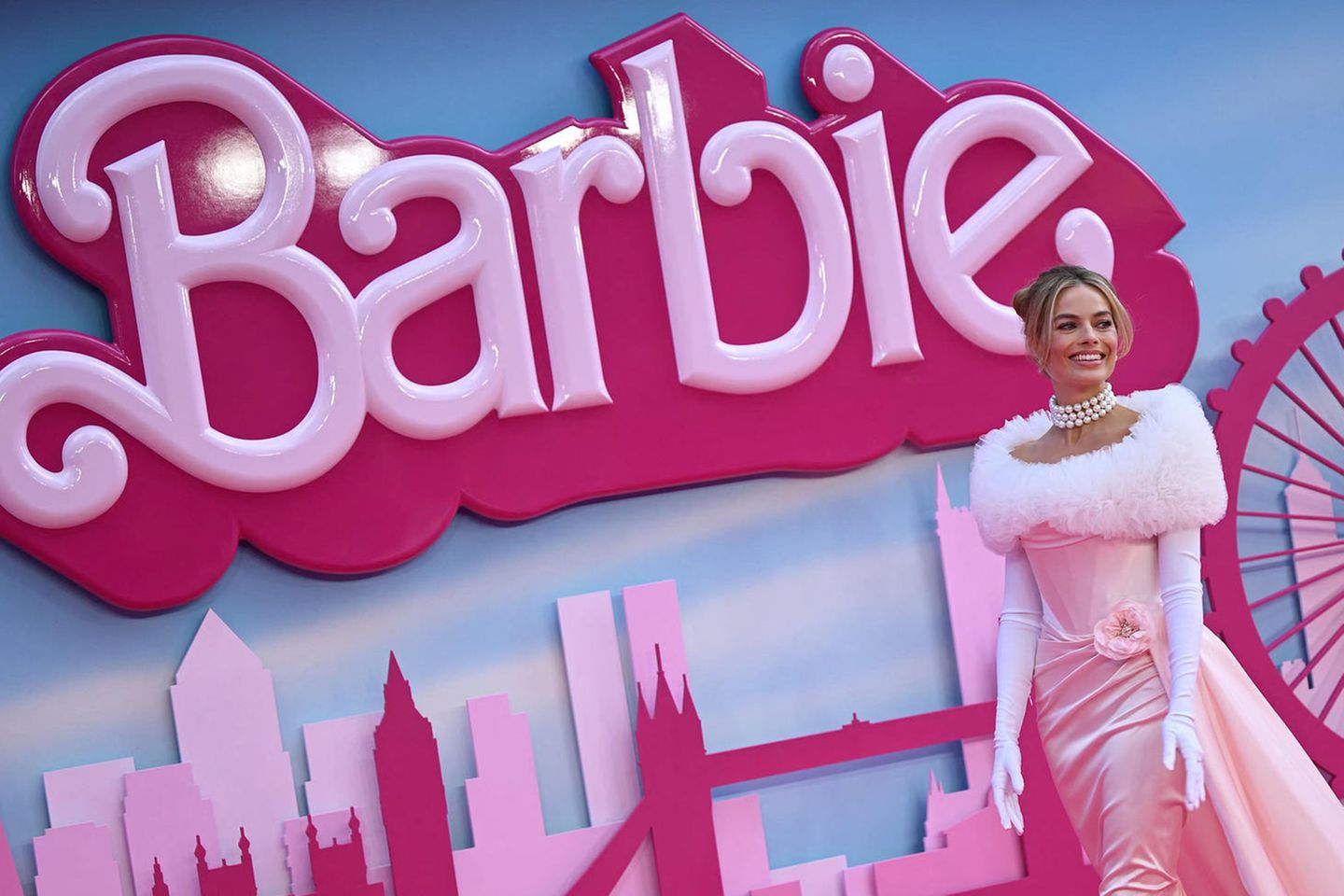Movie Review “Barbie”
No pitchforks: the revolution is pink
Margot Robbie
©Getty Images
Hardly a theatrical release was more longed for: “Barbie” is finally showing with us. The film has already broken several records in the USA. But does it really live up to its hype? A criticism.
The PR team has really given their all over the last few months; Nobody came up with the new tsunami-like marketing strategy The Barbie film is over: Limited collections with the big lifestyle brands, well-dosed set pictures that amazed us at the outfits that were true to the original, and finally a week-long promotional tour in which the main actress Margot Robbie no longer just appeared as an actress, but had already become one with her iconic film character. We were long in the middle of the Barbie world – and the film wasn’t even in the cinema yet.
“Barbie”: A film review
Making this pink plastic world palatable to us again was the major task of director Greta Gerwig’s team. In the meantime, the paint had flaked off in Barbieland and the blonde doll was identified as the enemy of feminism. Especially in the criticism: unrealistic body ideals, which among other things would have favored body image and eating disorders in the millennials – Barbie’s measurements would be 99-46-84 in the real world. And: focus on material things, racism, sexism and of course completely exaggerated clichés of masculinity and femininity.
All of these accusations hit the increasingly critical young puppeteers who take to the streets for diversity and body positivity. That can hardly go well – at least that’s what you would have thought ten years ago, even if Barbie’s message was always: A woman can be anything, whether it’s a doctor, a geriatric nurse or an astronaut.
Feminism meets prejudice
So the only way left for the Mattel mega-corporation was to flee forward – with the dolls themselves and ultimately also with the film, anything else would have meant a more complete disenchantment and finally banished Barbie to the farthest attic corners of this world. So Mattel commissioned Hollywood darling Greta Gerwig to direct and screenplay, multiple Oscar nominees and celebrated for feminist cinema. The ensemble: also from the category “front row of the big award ceremonies” with Margot Robbie and Ryan Gosling as standard Barbie and Ken – but a more diverse cast than the doll role models would suggest.
18 images
And so the film also manages to take the viewer into a world full of pink perfection, in which the – very appropriate here – pink elephant in the room, this meta-criticism, is immediately broken up in a humorous way. Because she’s out of place in Barbieland anyway: Margot Robbie is a “stereotype Barbie” but she’s pretty much alone in that; The other Barbies aren’t a true reflection of society either, but at least they’re all very different.
In Barbieland, matriarchy reigns supreme as a matter of course. All the important positions are filled by women, the Kens are just interchangeable supporting actors. The story of the film is then the classic heroine story: There is a problem (Barbie has stopped working, she has thoughts of death, her feet are getting flat and she is developing cellulite – mental health and body positivity wink here), so she has to go into the real world and solve it (find the girl who “played her broke”). Ken cheats on this trip into the real world. He wants to be with Barbie, but Barbie is just too independent.
On this trip to Los Angeles, the exciting break happens: Barbie unfortunately has to realize that our world is a patriarchy, just like Ken, for whom this discovery is not a culture shock that caused a heart attack, but a revelation, a silver lining. Men who rule the world – where is that?
Down with the patriarchy?
And while Barbie tries to find her owner and rants about the sexism she encounters on every street corner, Ken is already planning to overthrow the matriarchy in Barbieland: men in fur coats on horses now play the leading roles – after all, that’s how he saw it in books in the real world. He returns and turns the Barbie world inside out – or the way we know it anyway – and brainwashes the independent Barbies in droves. Meanwhile, Barbie finds her owner and takes her home with her without further ado – only to find Ken’s macho world there. But this problem is also solved with women’s power and cohesion.
If you expect an incredible amount of depth, you will be disappointed. The Barbie film, however, manages to process social criticism in a slapstick way: The swapped worlds, plus a very simply knitted Ken. All of this almost hurts when you look at the patriarchal structures and inequalities in our world, but you still have to laugh. The attention to detail also makes the hearts of Barbie fans leap for joy. This is how previously beloved and almost forgotten Barbie editions get their appearance – and sometimes also their well-deserved smack (“Pregnant Barbie was discontinued – creepy, who came up with the idea?”); The setting is pink kitsch perfection. Many stars have guest appearances and of course the soundtrack is also a class reunion of pop power women. The film leaves the viewer with a forgiving look at the dolls that used to populate our children’s rooms – and at the very end with a laugh probably the biggest Barbie secret of all time.
